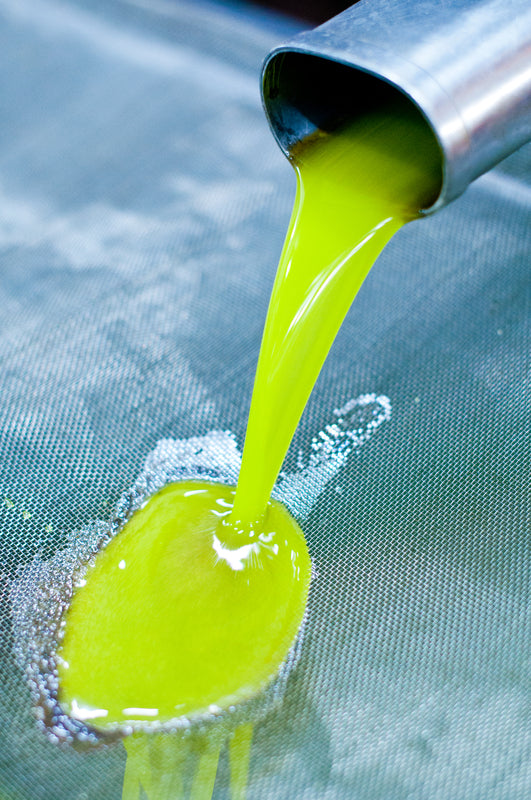
Cold-Pressed vs. Cold-Extracted Olive Oil
Share
Cold-Pressed vs. Cold-Extracted Olive Oil: A Deep Dive into Quality and Process
Olive oil, an essential element of Mediterranean cuisine, has a storied history that spans millennia. As demand for high-quality olive oil grows, consumers are becoming increasingly aware of the processes behind their favourite oils. Two terms often seen on labels are "cold-pressed" and "cold-extracted," both of which signify specific production methods but have different implications for the oil's quality and characteristics. In the UK, many people still believe that Cold-Pressed oils are the highest standard of quality; this may have been the case in the past but modern advancements in production methods have vastly increased olive oil quality in recent years.

Understanding the Production Methods
The production of olive oil begins with the careful selection and harvesting of olives, ideally at the peak of ripeness to ensure the best flavour and nutritional content. However, the journey from olive to oil involves critical steps that determine the final product's quality.
1. Cold-Pressed Olive Oil: This traditional method has been used for centuries, particularly in smaller, artisanal mills. In this process, olives are crushed into a paste using a stone or mechanical press, and the oil is extracted by applying pressure. The term "cold" refers to the fact that the temperature during extraction does not exceed 27°C (80.6°F), which helps preserve the oil's flavour and nutritional value. However, this method exposes the olive paste to air, leading to oxidation, which can affect the oil's taste and shelf life.
2. Cold-Extracted Olive Oil: Cold extraction is a more modern method that seeks to minimise the drawbacks of cold pressing. After the olives are ground into a paste, they are processed in a centrifuge that separates the oil from the water and solids in a closed system. This method also maintains the temperature below 27°C but crucially reduces the olive paste's exposure to oxygen, thus preserving the oil's aromatic profile and nutritional content more effectively than traditional pressing. MANI’s organic extra virgin olive oils are produced using this method, ensuring a purer, more aromatic product that retains its full complement of polyphenols and other health-promoting compounds.

Regulatory Standards and Quality Assurance
The European Union has stringent regulations that govern the labelling of olive oils to protect consumers and ensure product integrity. According to these regulations, oils labelled as "cold-pressed" must be produced using traditional hydraulic presses, whereas "cold-extracted" oils are those obtained through centrifugation. Both processes must adhere to the temperature limits that define "cold" processing, ensuring that the oil retains its natural characteristics and health benefits. These regulatory standards are vital for maintaining the quality and authenticity of olive oil, giving consumers confidence that the product they purchase meets rigorous standards. MANI's commitment to quality is reflected in going above and beyond these regulations, ensuring that every bottle of our organic extra virgin olive oil delivers the finest flavour and nutritional benefits.
The Bottom Line
While the term "cold-pressed" may evoke images of rustic, artisanal production, the reality is that cold-extracted olive oils often offer superior quality. The modern cold-extraction process not only preserves the delicate flavours and aromas of the olives but also protects the oil from oxidative damage, making it a more stable and healthful product. For those seeking the highest quality olive oil, cold-extracted oils, such as those produced by MANI, represent the pinnacle of purity and flavour. Shop our selection of cold extracted organic olive oils here.
